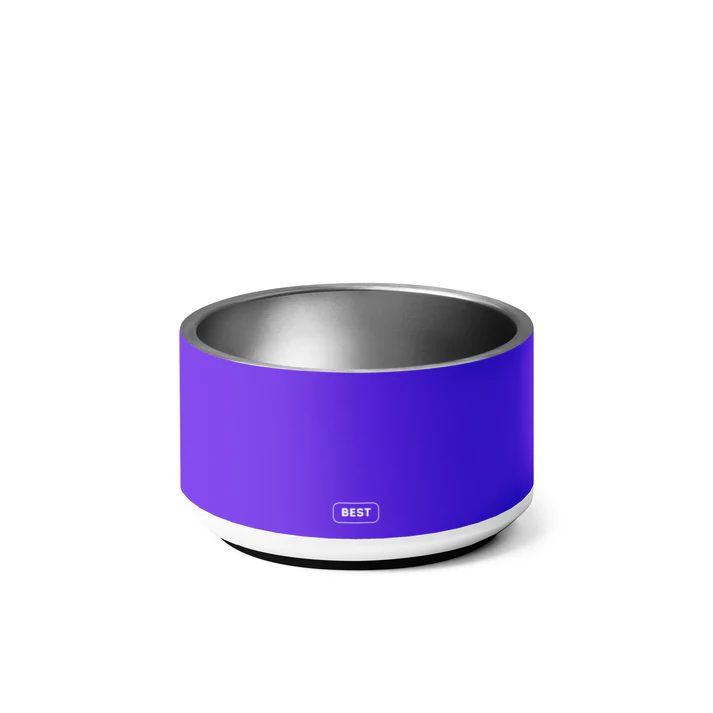Notifications

6 minutes, 34 seconds
-21 Views 0 Comments 0 Likes 0 Reviews

Choosing the right dog bowl may seem like a simple task, but it plays a crucial role in your pet's dining experience. With countless options available, it can be overwhelming to find a bowl that suits your dog's specific needs based on their breed and size. This article will guide you through various aspects of selecting the best dog bowl, ensuring not only functionality and comfort for your pet but also optimal health and hygiene.
Before diving into the multitude of dog bowl options, it's essential to understand your dog's individual needs based on their breed, size, and eating habits. Different breeds exhibit varying characteristics that can influence their feeding requirements. For example, larger breeds like Great Danes may benefit from elevated bowls to reduce strain on their necks, while smaller breeds may require shallow dishes to make eating easier. Additionally, consider your dog's eating style. Fast eaters might need slow-feeder bowls that prevent gulping, reducing the risk of choking or digestive issues.
The material of the dog bowl is a critical factor impacting your pet's health and the longevity of the bowl itself. Stainless steel is a popular choice among pet owners due to its durability, ease of cleaning, and resistance to rust and bacteria. It’s also dishwasher safe, making maintenance simple. Ceramic bowls can be aesthetically pleasing and often come in a variety of designs and colors, but they should be lead-free and properly glazed to be safe for your dog. Plastic bowls, while lightweight and affordable, can harbor bacteria over time and may not be as durable as their metal or ceramic counterparts. Understanding the pros and cons of each material will help you choose a safe and functional bowl for your dog.
Selecting the right size bowl is paramount for your dog's comfort during mealtime. Small breeds such as Chihuahuas or Yorkshire Terriers thrive with shallow bowls, while larger breeds like Labradors or Siberian Huskies need deeper, more spacious bowls to accommodate their larger snouts. A bowl that is too small may lead to mess and discomfort, while one that is too large can make it difficult for your dog to access their food. It's crucial to observe your pet's eating habits and choose a bowl that provides ample space without promoting overeating.
For larger dog breeds, elevated bowls are often an excellent option. These bowls are raised off the ground, making it easier for big dogs to eat without straining their necks. Elevated bowls can also aid in digestion by promoting a better posture during meals. Finding the right height for the bowl is important; it should align with your dog’s elbows when they are standing, allowing for a comfortable eating position. Many elevated bowls come with adjustable heights, making them suitable for growing puppies of larger breeds.
Modern dog bowls come with a range of innovative features designed to enhance convenience and functionality. Some bowls are designed with non-slip bases to prevent sliding during enthusiastic meals, which is particularly beneficial for larger or more energetic dogs. Others incorporate smart technology, such as automatic feeders that dispense food at scheduled times, perfect for busy owners or pets on specific feeding regimens. Slow feeder bowls, with unique designs that slow down eating, can also promote better digestion, which is crucial for dogs that tend to wolf down their food.

In a world where personalization is valued, many brands now offer customizable dog bowls. These bowls can be engraved or printed with your dog's name or a special message, adding a personal touch to their mealtime routine. Customization not only enhances the aesthetics of your pet's bowl but also fosters a sense of ownership and belonging for your dog. Choosing a bowl that reflects your style and your dog's personality can make feeding time more enjoyable and special.
Investing time and thought into selecting the best dog bowl for your furry friend is an important decision that impacts their daily life and overall health. By considering your dog's breed, size, and eating habits, along with the material and features of the bowl, you can find the perfect fit for their needs. Whether you opt for a stylish ceramic bowl, a practical stainless steel option, or a high-tech automatic feeder, the right choice will not only enhance your pet's mealtime experience but also enrich the bond you share. With thoughtful selection, you can ensure that every meal is a delightful and healthful occasion for your beloved dog.

